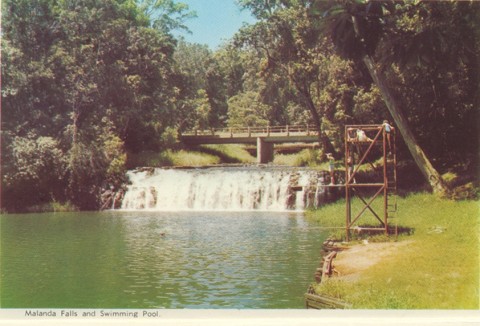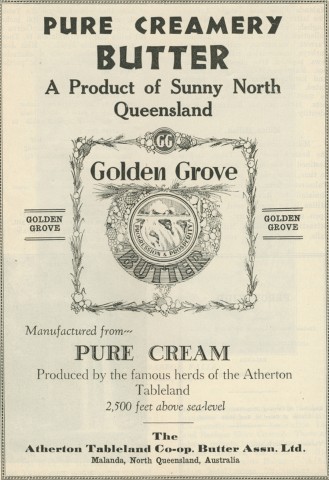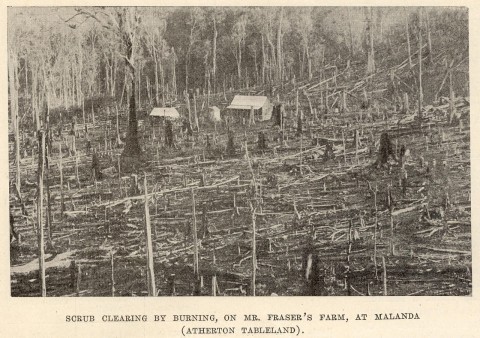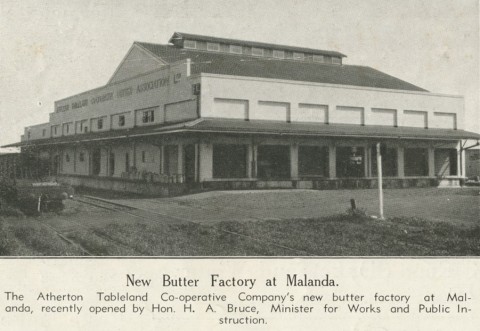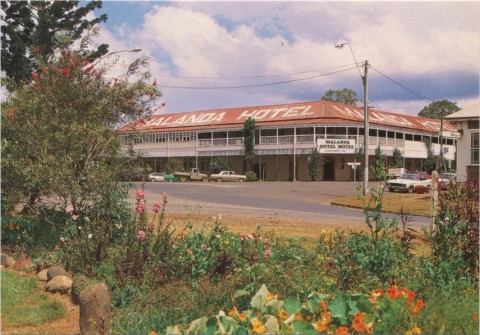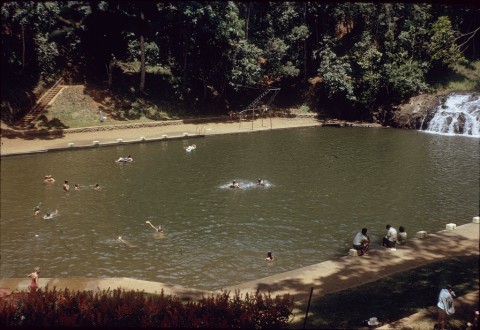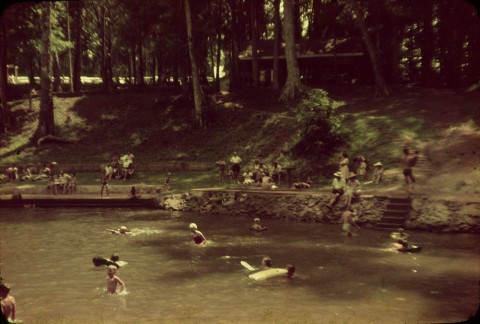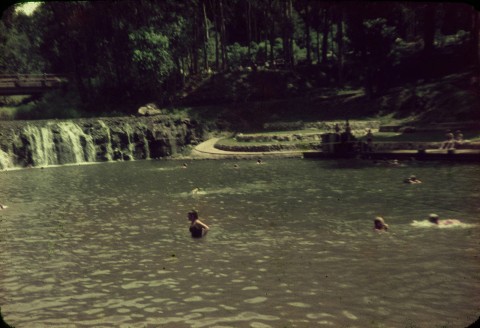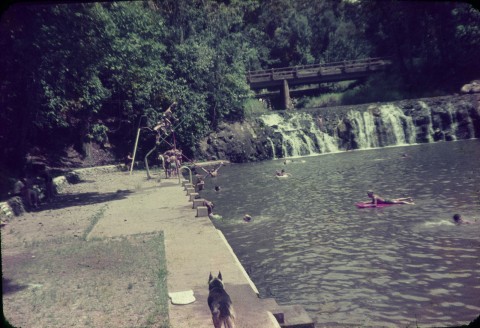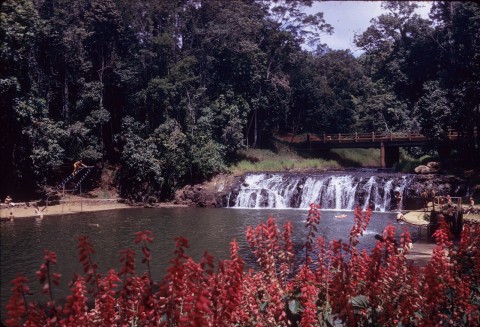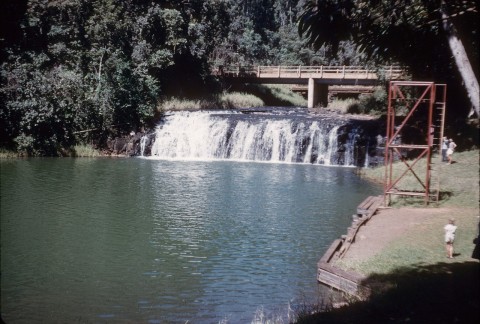Malanda, a rural town on the Johnstone River on the Atherton Tableland, is 50 km south-west of Cairns.
Originally known as Tutamoulin, Malanda was surveyed for closer-settlement farms in 1906, and a township was surveyed three years later. Land sales occurred the following year, coinciding with the extension of the Cairns railway. Owing to the place name's similarity to Tumoulin on the nearby Evelyn Tableland it was changed to Malanda when the railway station was opened. It is thought that the name derived from an Aboriginal word describing the upper Johnstone River or a place on the river.
One of the land purchasers soon set about erecting the large Malanda Hotel (1911), and a progress association was formed. Along with Tolga and Yungaburra, the town successfully petitioned for a separate shire, Eacham, headquartered at Malanda. The railway enabled improved transport of dairy produce, along from a local sawmill (1910). The large, elaborate timber Malanda Hotel opened in 1911 and a school opened in 1913.
The Eacham Agricultural, Pastoral and Industrial Association (later the Malanda Show Society) held its first show in 1916, an early indication of Malanda's leadership in rural history: ultimately the Malanda dairy factory would absorb all the others on the Tableland.
The Golden Grove factory at Atherton (1913) was the main centre, but in 1921 it opened a branch at Malanda. Three years later operations were transferred to Malanda, but an active co-operative factory was opened at Millaa Millaa (22 km distant) in 1929. When Malanda was described in Pugh's Queensland Directory in 1925 it had two cheese factories, two dairy factories, a bacon factory, several stores and tradespeople, a sawmill and the shire offices. Anglican, Catholic and Methodist churches were also opened during the 1920s, along with the Gillies Highway from Gordonvale, near Cairns (1926). St James Catholic Church (1925) in Monash Avenue is listed on the Queensland heritage register.
During World War II allied servicemen, including many Americans, stimulated the demand for fresh milk, and the Malanda factory developed the postwar 'world's longest milk run', by rail to Mount Isa, Cloncurry and Mary Kathleen, and to Rockhampton, Mackay and Caboolture during a southern drought. Amalgamation of dairy factories went Malanda's way, with the closures of Ravenshoe (1957) and Millaa Millaa (1973). A prosperous postwar dairy industry led to Malanda becoming the district's most populous town. A secondary department was added to the school in 1949 and a separate high school was opened in 1963. The closure of the railway the next year was not a serious blow as road tankers and buses handled the milk and Tableland tourist traffic.
Tourism proved to have the longer term profitability, favouring Yungaburra: a World Heritage classification of the rainforests closed down sawmilling in Malanda but contributed to Yungaburra's tourist industry. Malanda maintained dairy supremacy, joining the Dairy Farmers conglomerate in 1997. Its best tourist attractions include the Majestic Theatre (1929) which was acquired by Eacham Shire and leased to the Malanda Theatre Company, the Malanda Dairy Centre and the Malanda Falls on the Johnstone River.
Malanda has a shopping centre, a visitor information centre, five churches, a showground, the milk factory and a dairy centre, State primary and high schools (1913, 1961), two aged persons' facilities and a bowling club. Malanda's census populations have been:
| Census Date | Population |
|---|---|
| 1911 | 117 |
| 1921 | 513 |
| 1954 | 907 |
| 1976 | 805 |
| 1986 | 932 |
| 2006 | 1009 |
| 2011 | 2052 |
Malanda in the shadow of Bartle Frere, Malanda, Eacham Historical Society, 1995
Anne Statham, Cows in the vine scrub: a history of dairying on the Atherton Tableland, Malanda, Malanda Dairyfoods, 1998
